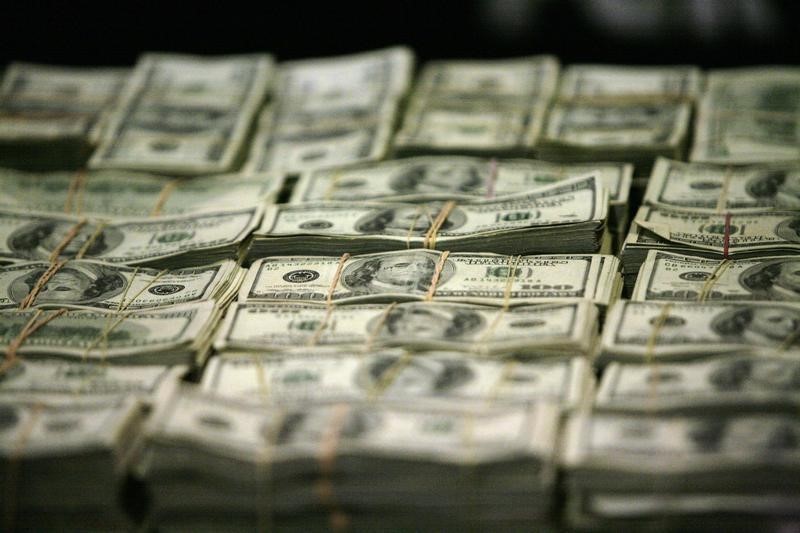Investing.com - The dollar edged higher against other major currencies on Thursday, easing off a one-month low as markets digested the Federal Reserve’s latest policy move and focused on decisions from other central banks around the world.
EUR/USD slipped 0.10% to 1.0721, off a five-week high of 1.0746 hit overnight.
At the end of its two-day policy meeting on Wednesday, the Fed increased interest rates by 25 basis points to 1.00% from 0.75%, as expected.
The greenback weakened broadly following the decision, as the central bank’s stance was seen as less hawkish than expected by sticking to projections of three total rate hikes in 2017 and not four as some traders had hoped for.
The euro had initially strengthened as Dutch election results boosted hopes that a mainstream candidate will win the upcoming French presidential elections after Prime Minister Mark Rutte’s party comfortably beat the anti-Islam Freedom party.
Elsewhere, GBP/USD fell 0.21% at 1.2267, off Wednesday’s two-week peak of 1.2309.
Later Thursday, the Bank of England was expected to leave its monetary policy unchanged. Market participants were expected to focus on the central bank’s comments following the decision for any clues on future policy moves and its stance on a post-Brexit U.K. economy.
USD/JPY held steady at 113.44, after hitting a two-week low of 112.91 earlier in the session, while USD/CHF edged down 0.19% to 0.9983.
The Bank of Japan chose to leave its monetary policy unchanged at the end of its policy meeting on Thursday, underscoring the diverging policy paths of major global central banks.
Also in line with market expectations, the Swiss National Bank kept its Libor rate on hold at a record low of -0.75%.
The Australian and New Zealand dollars were weaker, with AUD/USD down 0.31% at 0.7686 and with NZD/USD retreating 0.68% to 0.6998.
Earlier Thursday, the Australian Bureau of Statistics reported that the number of employed people declined by 6,400 in February, compared to expectations for an increase of 16,000.
The unemployment rate rose to 5.9% last month from 5.7%, confounding expectations for an unchanged reading.
Separately, Statistics New Zealand reported that the country’s gross domestic product rose 0.4% in the fourth quarter of 2016, confouding expectations for an increase of 0.7%.
Year-on-year, New Zealand’s GDP rose 2.7% in the last quarter, disappointing expectations for a growth rate of 3.1%.
Meanwhile, USD/CAD was little changed at 1.3302, the lowest since March 1.
The U.S. dollar index, which measures the greenback’s strength against a trade-weighted basket of six major currencies, was up 0.09% at 100.44, just off a one-month low of 100.25 hit overnight.
